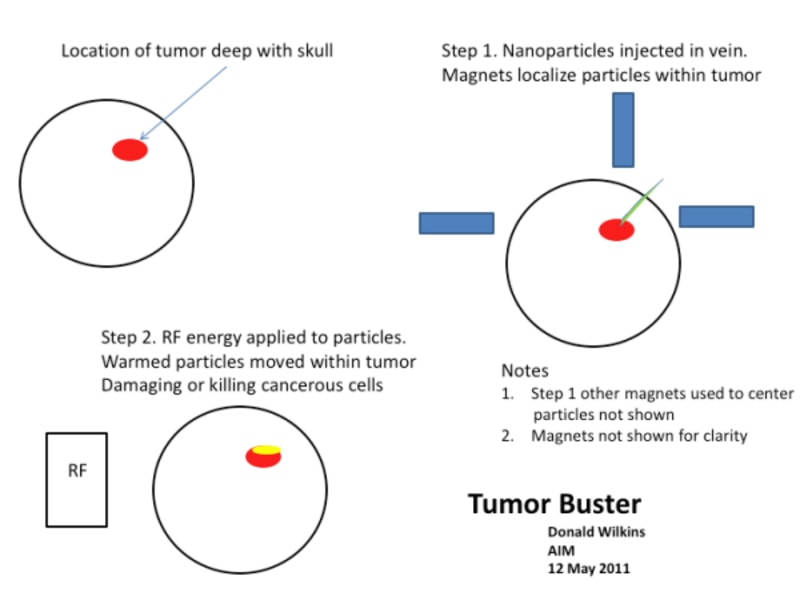Brain tumors include all tumors inside the cranium or in the central spinal canal. Protected by the skull, early detection of a brain tumor only occurs when diagnostic tools are directed at the intracranial cavity. Detection occurs when the tumor is in an advanced stage significantly reduces the chance of successful treatment.
In 2005, Americans were afflicted with 43,800 new cases of brain tumors which accounted for 1.4 percent of all cancers, 2.4 percent of all cancer deaths, and 20–25 percent of pediatric cancers. Brain tumors cause 13,000 deaths per year in the United States.
The prognosis of brain cancer varies based on the type of cancer. Chemotherapy, radiotherapy and surgical resection usually provide good outcomes with medulloblastoma. Patients with glioblastoma multiforme have a median survival period of 12 to 17 months even with aggressive treatment. Brainstem gliomas have the poorest prognosis; the majority of patients die within one year.
Various treatments are available depending on neoplasm type and location and may be combined to give the best chances of survival:
• surgery: complete or partial resection of the tumor with the objective of removing as many tumor cells as possible
• radiotherapy
• chemotherapy, with the aim of killing as many as possible of cancerous cells left behind after surgery and of putting remaining tumor cells into a nondividing, sleeping state for as long as possible.
Each of these techniques has drawbacks; none, alone or in combination, provide a certain cure. Nanoparticles offer a solution, one with few side effects and a higher probability of success. As shown in the attached drawing magnetic nanoparticles can be injected into the bloodstream and routed to the tumor. Fixed in place by a magnetic field, the nanoparticles could be heated by a radio frequency field. Cancer cells are susceptible to mild heating, 104 and 1130 Fahrenheit, temperatures which will not affect normal cells.
Nanoparticles suitable for medical applications are produced in laboratories and by commercial enterprises. Equipment to heat the nanoparticles is commercially available. The technique must be thoroughly tested but it appears to hold great promise for elimination of a deadly family of cancers.
The nanoparticle treatment could be very inexpensive to conduct. Eliminating the need for complex, expensive equipment and extensive hospital stays, the nanoparticle treatment would help contain medical costs.
Like this entry?
-
About the Entrant
- Name:Don Wilkins
- Type of entry:individual
- Patent status:none

